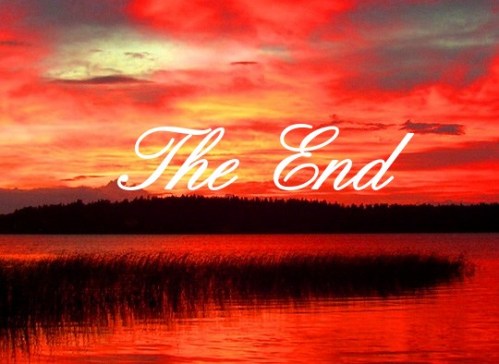
Do you have an interest in recording the life stories of palliative care patients? If you do, I can tell you that it’s very satisfying and rewarding work. Over the years I’ve had the honor and privilege of bearing witness to those who were dying. In the process I’ve accumulated a library of resource books that I’ve found particularly useful. This is an eclectic selection and by no means exhaustive. However, you might find the list helpful if you’re planning to work in this specialized area of personal histories.
_____________________________________
Tuesdays with Morrie: An Old Man, a Young Man, and Life’s Greatest Lesson. Mitch Albom. Broadway (October 8, 2002)
“This true story about the love between a spiritual mentor and his pupil has soared to the bestseller list for many reasons. For starters: it reminds us of the affection and gratitude that many of us still feel for the significant mentors of our past. It also plays out a fantasy many of us have entertained: what would it be like to look those people up again, tell them how much they meant to us, maybe even resume the mentorship?” From Amazon.com Review
Dying Well. Ira Byock. Riverhead Trade; 1 edition (March 1, 1998)
“Byock, president elect of the American Academy of Hospice and Palliative Care, is a gifted storyteller. Beginning with his own father’s terminal illness, he details without scientific cant the process of decline that awaits most of us. The case studies, which form the humanistic soul of this work, never devolve into the maudlin or saccharine. Life on the edge of the great crossing is explored in all its sadness and pathos, but Byock also makes room for wisdom, hope and even the joy of final understanding.” From Publishers Weekly
Another Morning: Voices of Truth and Hope from Mothers with Cancer. Linda Blachman. Seal Press; 1 edition (February 10, 2006) “Another Morning is the best oral history of the experience of cancer that I have ever seen. The women’s voices are angry, sad, and most of all, loving, as they tell stories of illness, loss, families and motherhood. Linda Blachman has written an essential documentary resource for clinicians and health researchers, and she offers those living with cancer the companionship of generously shared experiences.” Review by Arthur W. Frank, MD, Author, The Renewal of Generosity and The Wounded Storyteller
Final Gifts: Understanding the Special Awareness, Needs, and Communications of the Dying. Maggie Callanan and Patricia Kelley. Bantam (February 3, 1997)
“Impressive insights into the experience of dying, offered by two hospice nurses with a gift for listening. The “final gifts” of the title are the comfort and enlightenment offered by the dying to those attending them, and in return, the peace and reassurance offered to the dying by those who hear their needs.” From Kirkus Reviews
The Year of Magical Thinking. Joan Didion. Vintage (February 13, 2007)
“Didion’s husband, the writer John Gregory Dunne, died of a heart attack, just after they had returned from the hospital where their only child, Quintana, was lying in a coma. This book is a memoir of Dunne’s death, Quintana’s illness, and Didion’s efforts to make sense of a time when nothing made sense.” From The New Yorker
Mortally Wounded: Stories of Soul Pain, Death, and Healing. Michael Kearney. Spring Journal, Inc (December 1, 2007)
“Through somber stories, a hospice physician shares his experiences of working with people near death, revealing how the dying process can be a time of personal growth. Kearney, medical director of palliative care at Our Lady’s Hospice in Dublin, Ireland, argues that the terror of death stems from a split between the rational and intuitive minds. When an individual becomes alienated from his deepest and most fundamental aspect, he says, the result is soul pain.” From Kirkus Reviews
What Dying People Want: Practical Wisdom For The End Of Life. David Kuhl. PublicAffairs; 1 edition (July 8, 2003)
“Drawing from case studies that he conducted as part of the Soros Foundation’s “Death in America” project, Kuhl provides a balanced perspective on caring for the terminally ill. An M.D. himself, he acknowledges that doctors sometimes have poor interpersonal skills, and he offers helpful insight into why this is so and how patients can foster better communication. Besides discussing the physician’s account of the clinical aspects of the dying process, Kuhl sensitively examines the harder-to-define psychological and spiritual issues.” From Library Journal
A Year to Live: How to Live This Year as If It Were Your Last. Stephen Levine. Three Rivers Press; Bell Tower Trade Paper Edition. 11th Pri edition (April 14, 1998) “As a counselor for the terminally ill and author of many works on spirituality and dying, Levine has come to believe that preparing for or “practicing” death reminds one of the beauty of life. In this production of his book (Crown, 1997), Levine himself relates his experiences and emotions in his yearlong experiment in “conscious living.” From Library Journal
Facing Death and Finding Hope: A Guide To The Emotional and Spiritual Care Of The Dying . Christine Longaker. Main Street Books (May 18, 1998)
“Christine Longaker’s experience with death and care of the dying began in 1976 when her husband was diagnosed with acute leukemia at the age of 24. Since his death, she has devoted her life to ease the suffering of those facing death. In a clear and compassionate tone, she identifies the typical fears and struggles experienced by the dying and their families. The core of the book is presented in “Four Tasks of Living and Dying,” using the Tibetan Buddhist perspective on death to provide a new framework of meaning that can be applied to every type of caregiving setting. These spiritual principles are universal, enabling readers to find resonance within their own religious traditions.” From the Publisher
Dying: A Book of Comfort. Pat McNees. Grand Central Publishing; 1 edition (August 1, 1998)
“This remarkable collection, coming from personal experience and wide reading, will help many find the potential of growth through loss.” Review by Dame Cicely Saunders, founder of the hospice movement
How We Die: Reflections of Life’s Final Chapter. Sherwin B. Nuland. Vintage; 1 edition (January 15, 1995)
“Drawing upon his own broad experience and the characteristics of the six most common death-causing diseases, Nuland examines what death means to the doctor, patient, nurse, administrator, and family. Thought provoking and humane, his is not the usual syrup-and-generality approach to this well-worn topic.” From Booklist
The Good Death: The New American Search to Reshape the End of Life. Marilyn Webb. Bantam; Bantam Trade Ed edition (February 2, 1999) “Webb’s message is clear: The modern way of dying involves excessive emphasis on exotic technology and too little reliance on palliative care. The book is richly textured with personal, international, and cross-cultural suggestions for remedying the imbalance.” From Library Journal
Grace and Grit: Spirituality and Healing in the Life and Death of Treya Killam Wilber. Ken Wilber. Shambhala; 2 edition (February 6, 2001)
“A tremendously moving love story. Wilber presents cancer as a healing crisis, an occasion for self-confrontation and growth.” From Publishers Weekly
Photo by Denis Collette
If you enjoyed this post, get free updates by email.
 The last week of my “staycation” and time to dip into some of the best of my previous Monday’s Links.
The last week of my “staycation” and time to dip into some of the best of my previous Monday’s Links.





































